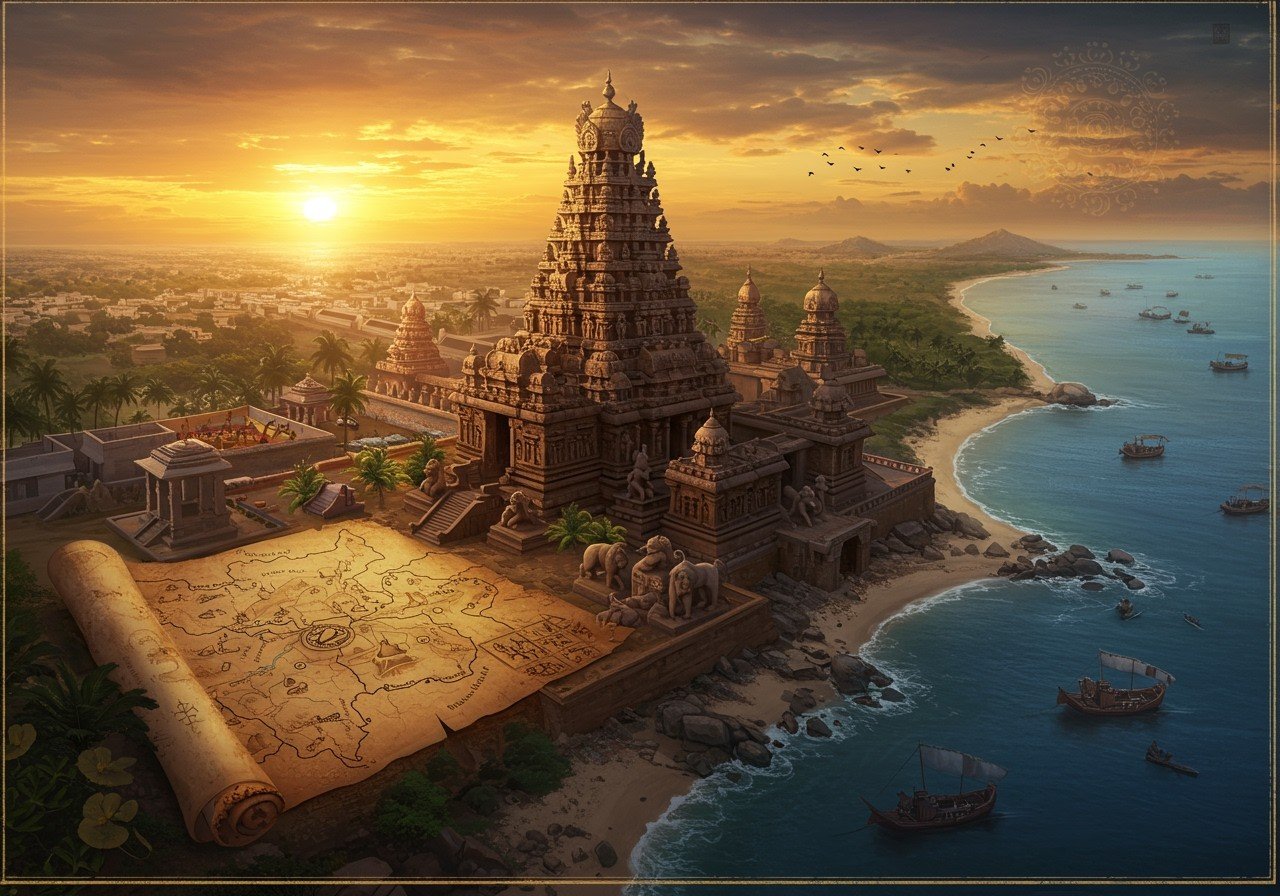
The Pallava dynasty, a significant power in southern India, reigned from the early 4th century to the late 9th century AD. Known for their contributions to art, architecture, and literature, they left an indelible mark on India’s cultural landscape. Their capital, Kanchipuram, served as a hub of creativity and power, with their territory extending from northern Andhra Pradesh to the River Kaveri in the south. The Pallavas also played a crucial role in developing the Grantha script, which influenced scripts across Southeast Asia. The dynasty’s influence peaked during the reign of Mahendravarman I (571-630 CE).
Historical Overview of the Pallava Dynasty
Origins and Rise
Emerging after the Satavahana decline, the Pallavas established their kingdom in present-day Tamil Nadu, significantly shaping the region’s political and cultural trajectory.
Prominent Rulers
- Mahendravarman I (571-630 CE): A patron of the arts, he significantly expanded the kingdom’s territory and championed architectural innovation.
- Narasimhavarman I (630-668 CE): Renowned for his military prowess, he defeated the Chalukyas, further solidifying Pallava dominance and expanding their realm.
Key Events
- Conflicts with the Chalukyas: These battles played a defining role in shaping the political landscape of the Pallava era and contributed to the dynasty’s military legacy.
- Rivalry with the Pandya Dynasty: The struggle for regional dominance between these two powerful dynasties marked a period of intense conflict and political maneuvering.
The Heart of the Pallava Kingdom
Kanchipuram: The Capital City
- Geographical Significance: Known as the “Golden City,” Kanchipuram held a strategic location, serving as a vital center for trade, religion, and administration.
- Architectural Marvels: Kanchipuram boasts iconic temples like the Kailasanathar Temple, a testament to Pallava architectural ingenuity, and the Ekambareswarar Temple, a sprawling complex showcasing their mastery of temple design.
Cultural Importance
Kanchipuram thrived as a center of learning and religious activity, fostering intellectual and spiritual growth within the kingdom. Other important cities included Mamallapuram, renowned for its breathtaking rock-cut temples and intricate sculptures.
Expansion and Boundaries of the Pallava Realm
Conquests and Territorial Growth
The Pallavas extended their influence into parts of present-day Andhra Pradesh and Karnataka, demonstrating their military strength and ambition. Their reach encompassed South Arcot and Northern Tamil Nadu, solidifying their regional power.
Strategic Coastal Holdings
Control over coastal regions facilitated trade and cultural exchange, contributing to the dynasty’s economic prosperity and cosmopolitan character.
Mapping the Pallava Dynasty
A detailed map of the Pallava Dynasty at its zenith reveals key cities, regions, and landmarks. This historical reconstruction is based on inscriptions, literary works, archaeological findings, and other historical records, offering a visual representation of their vast influence.
Cultural and Architectural Heritage
Distinctive Architectural Style
The Pallavas significantly developed the Dravidian architectural style, evident in their magnificent temples. Their mastery of rock-cut architecture, particularly in Mamallapuram, stands as a testament to their artistic and engineering skills.
Patronage of Literature and Scholarship
The Pallavas nurtured Tamil and Sanskrit literature, leaving a lasting impact on subsequent South Indian dynasties and contributing to the rich literary tapestry of the region.
The Pallava Dynasty: An Enduring Legacy
The Pallava Dynasty’s profound contributions to South Indian history continue to resonate today. Their architectural marvels, cultural advancements, and strategic expansions underscore their pivotal role in shaping the region’s heritage. Exploring their territorial extent provides insights into their lasting impact.
Explore the Badami Cave Temples, showcasing the architectural prowess of the Chalukya Dynasty, contemporaries of the Pallavas.
Discover the Pallikondeswara Temple, a historical site with connections to the Pallava era.
Shop Authentic Puja Items for Temple Worship at Poojn.in
As you delve into the rich heritage of the Pallava Dynasty and their magnificent temples, enhance your connection to these sacred traditions with authentic puja items from Poojn.in. Our collection includes:
- Temple Bells: Pure brass and copper bells, reminiscent of those used in ancient Pallava temples, create a sacred atmosphere for your prayers. Available in various sizes and designs, these bells enhance the spiritual resonance of your puja space.
- Traditional Oil Lamps (Deepam): Illuminate your altar with traditional oil lamps, similar to those used in Pallava temple rituals. Crafted from brass and copper, these lamps symbolize the dispelling of darkness and the invocation of divine light.
- Camphor and Wicks: Elevate your aarti ceremonies with premium quality camphor and wicks. Our selection ensures a clean and vibrant flame, enhancing the sanctity of your worship.
- Copper and Silver Vessels: Perform abhishekam rituals with pure copper and silver vessels, adding an element of purity and reverence to your offerings. Our range includes various sizes and styles to suit your specific needs.
- Sandalwood and Incense: Infuse your temple worship with the fragrant aromas of sandalwood and natural incense. Our collection features a variety of scents, creating a serene and uplifting atmosphere for your prayers.
Poojn.in, India’s largest Dashakarma bhandar, delivers genuine, high-quality puja items right to your doorstep. Maintain your spiritual connection with ancient temple traditions while performing daily puja rituals at home. Visit Poojn.in to explore our complete range of temple worship items and keep these sacred practices alive.
Lord Shiva Marble Dust Murti
Marble Dust Shiva Lingam
Mangalam Camphor Butter Paper


